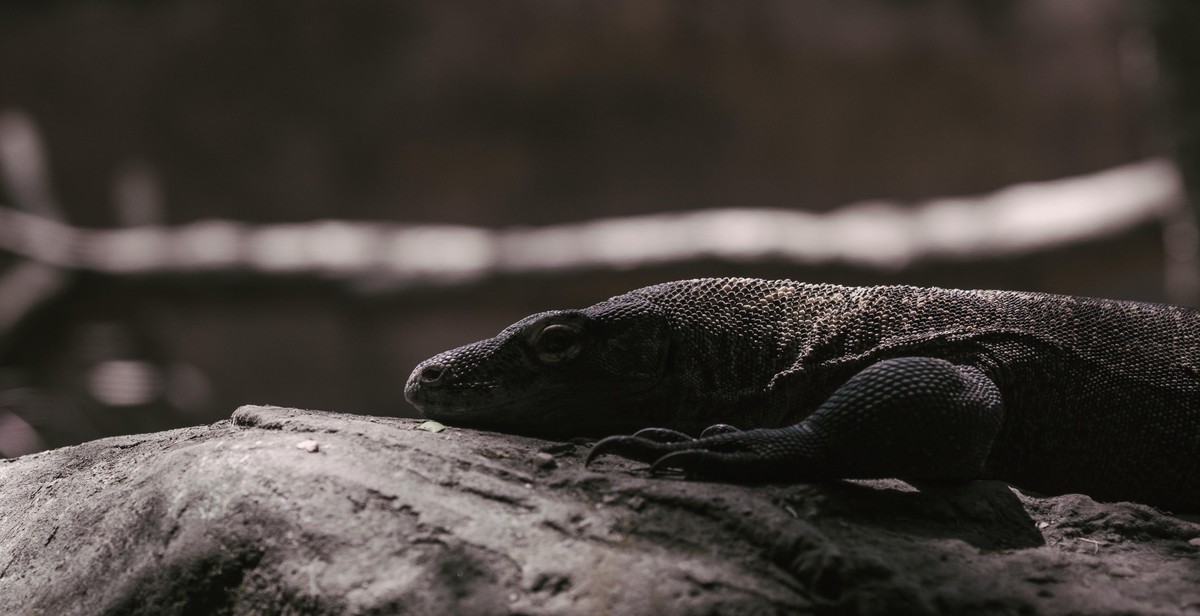Introduction
Conservation biology is a critical field that aims to protect and preserve biodiversity and ecosystems. With the increasing threat of climate change, habitat loss, and species extinction, conservation efforts have become more important than ever. In recent years, artificial intelligence (AI) has emerged as a powerful tool in various industries, and conservation biology is no exception. AI technology has the potential to revolutionize the way we approach conservation and enhance our ability to protect ecosystems.
AI can assist conservation biologists in several ways. Through advanced data analysis and machine learning algorithms, AI can help monitor and predict changes in ecosystems, identify patterns, and detect threats to biodiversity. It can analyze large datasets collected from various sources, such as satellite imagery, sensors, and citizen science initiatives, providing valuable insights for decision-making and resource allocation.
Furthermore, AI can aid in species identification and monitoring. With computer vision technology, AI can analyze images or audio recordings to identify species and track their populations. This can significantly improve the efficiency and accuracy of wildlife surveys, enabling researchers to better understand population dynamics and devise effective conservation strategies.
This article explores the intersection of AI and conservation biology, highlighting the potential benefits and applications of AI technology in protecting ecosystems. We will delve into specific examples of how AI is already being utilized in conservation efforts and discuss the challenges and ethical considerations associated with its implementation.

The Role of AI in Conservation Biology
Conservation biology is a critical field that aims to protect and preserve ecosystems and the species within them. With the advent of artificial intelligence (AI) technology, conservation efforts have been revolutionized, allowing for more efficient and effective methods of wildlife monitoring, species distribution prediction, and endangered species identification and tracking.
1.1 Automating Wildlife Monitoring
AI has enabled the automation of wildlife monitoring, reducing the need for manual labor and significantly increasing the scale and accuracy of data collection. Drones equipped with AI algorithms can now be deployed to survey vast areas, capturing high-resolution images and videos of wildlife populations. This technology enables researchers to monitor species’ behaviors, population dynamics, and habitat use in real-time, providing valuable insights for conservation planning.
1.2 Predicting Species Distribution
AI algorithms can analyze large datasets, including climate, topography, and species occurrence records, to predict species distribution patterns. By identifying the key environmental factors influencing species presence, AI can generate accurate models that help conservationists understand how species might respond to future environmental changes. These predictions aid in the development of targeted conservation strategies, such as habitat restoration and protected area management.
1.3 Identifying and Tracking Endangered Species
AI-powered image recognition technology has revolutionized the identification and tracking of endangered species. By analyzing vast amounts of camera trap images or satellite imagery, AI algorithms can detect and identify species, including those that are elusive or endangered. This allows conservationists to estimate population sizes, monitor individual movements, and detect potential threats more efficiently. Additionally, AI can help identify illegal wildlife trade activities by analyzing online marketplaces and social media platforms.
In conclusion, AI plays a crucial role in conservation biology by automating wildlife monitoring, predicting species distribution, and identifying and tracking endangered species. These advancements in technology enable conservationists to gather more accurate and comprehensive data, leading to more effective conservation strategies and ultimately protecting ecosystems and the species within them.

2. AI Applications in Habitat Restoration
The integration of artificial intelligence (AI) technology in conservation biology has opened up new avenues for effective habitat restoration and ecosystem protection. By leveraging AI algorithms and machine learning techniques, researchers and environmentalists are able to map and analyze ecosystems, control invasive species, and optimize conservation strategies.
2.1 Mapping and Analyzing Ecosystems
AI technology plays a crucial role in mapping and analyzing ecosystems, providing invaluable insights into their structure and dynamics. Through the use of remote sensing techniques, AI algorithms can process large amounts of satellite imagery and aerial data to create detailed maps of habitats and identify key ecological features. This enables researchers to gain a comprehensive understanding of ecosystem composition, distribution, and health.
2.2 Controlling Invasive Species
Invasive species pose a significant threat to native biodiversity and ecosystem stability. AI-powered tools are proving to be effective in detecting and controlling invasive species, helping conservationists prioritize and implement targeted eradication efforts. By analyzing vast amounts of data, including species distribution records, environmental variables, and habitat characteristics, AI algorithms can identify the patterns and factors that contribute to the spread of invasive species. This information enables the development of proactive management strategies to prevent further invasions and mitigate their impacts.
2.3 Optimizing Conservation Strategies
AI technology also plays a crucial role in optimizing conservation strategies by providing data-driven insights and predictive modeling. By analyzing historical data on species populations, habitat conditions, and environmental variables, AI algorithms can identify patterns and relationships that help inform conservation decision-making. This includes predicting the potential impacts of different management actions, such as habitat restoration or species reintroduction, and identifying the most effective strategies for achieving conservation goals.
Furthermore, AI-powered optimization algorithms can help conservationists allocate limited resources more efficiently. By considering multiple variables and constraints, such as budget limitations and ecological priorities, these algorithms can generate optimal plans for habitat restoration and species conservation.
Overall, the integration of AI technology in habitat restoration and conservation biology holds great promise for the protection of ecosystems. By leveraging AI algorithms for mapping and analyzing ecosystems, controlling invasive species, and optimizing conservation strategies, researchers and environmentalists can make more informed decisions and take targeted actions to safeguard biodiversity and restore habitats.

AI for Environmental Monitoring
In recent years, artificial intelligence (AI) has emerged as a powerful tool in conservation biology, helping protect ecosystems and monitor environmental conditions more effectively. AI algorithms, coupled with advanced sensing technologies, have revolutionized the way we monitor air and water quality, detect and manage forest fires, and combat illegal logging and poaching.
3.1 Air and Water Quality Monitoring
AI algorithms have greatly enhanced the accuracy and efficiency of air and water quality monitoring systems. By analyzing large volumes of real-time data from various sensors, AI can detect and predict pollution levels, enabling prompt actions to mitigate environmental risks. Machine learning models can identify patterns and anomalies in data, helping scientists and policymakers make informed decisions to protect ecosystems and human health.
3.2 Forest Fire Detection and Management
Forest fires pose a significant threat to biodiversity and ecosystems. AI-powered technologies, such as remote sensing and image analysis, enable early detection and rapid response to forest fires. Machine learning algorithms can analyze satellite imagery and identify fire-prone areas, allowing authorities to implement preventive measures. AI also aids in fire management by predicting fire behavior, optimizing resource allocation, and assisting firefighters in real-time decision-making.
3.3 Illegal Logging and Poaching Detection
Illegal logging and poaching have severe consequences for the environment and wildlife conservation efforts. AI-based systems using image recognition and pattern analysis can monitor vast areas and identify suspicious activities in real-time. By analyzing data from cameras, drones, and other surveillance devices, AI algorithms can detect and alert authorities to illegal activities, allowing for timely intervention and prevention.
AI’s ability to process and analyze vast amounts of data enables more efficient and proactive environmental monitoring. These advancements not only help protect ecosystems but also provide valuable insights for policymakers and conservationists to develop effective strategies for sustainable resource management and biodiversity conservation.

Challenges and Limitations
4.1 Data Availability and Quality
Data availability and quality pose significant challenges for the successful implementation of AI in conservation biology. While AI algorithms rely heavily on large datasets for training and analysis, obtaining comprehensive and reliable data on ecosystems can be a daunting task. Many remote areas and biodiversity hotspots lack sufficient data coverage, hindering the development of accurate AI models.
Furthermore, the quality of available data is crucial for the effectiveness of AI systems. Inadequate or biased data can lead to inaccurate predictions and flawed conservation strategies. It is essential to ensure that data used for training AI algorithms is representative, unbiased, and up-to-date. This requires collaboration between scientists, conservationists, and data experts to collect and curate high-quality datasets.
4.2 Ethical Considerations
The integration of AI in conservation biology raises several ethical considerations. The use of AI algorithms to make decisions that impact ecosystems and wildlife requires careful evaluation and ethical guidelines. There is a need to ensure transparency, accountability, and fairness in the development and deployment of AI systems.
Additionally, ethical concerns arise regarding the potential displacement of human conservationists by AI technologies. While AI can automate certain tasks and improve efficiency, it should not replace human expertise and judgment. Striking a balance between AI and human involvement is crucial to ensure ethical decision-making and maintain the human connection to nature.
4.3 Integration with Traditional Conservation Methods
Integrating AI with traditional conservation methods presents both challenges and opportunities. Conservation biology has long relied on fieldwork, expert knowledge, and community engagement. The successful implementation of AI in conservation requires collaboration and integration with these existing methods.
One challenge is the potential resistance or skepticism from traditional conservationists, who may view AI as a threat to their established practices. Building trust, promoting dialogue, and showcasing the complementary nature of AI and traditional methods can help overcome these challenges and foster collaboration.
Furthermore, it is essential to consider the limitations of AI systems. While AI can process vast amounts of data and identify patterns, it may struggle to capture complex ecological interactions and dynamics. Integrating AI with traditional methods can help bridge these gaps and ensure a holistic approach to conservation.

Conclusion
In conclusion, the integration of artificial intelligence (AI) technology in conservation biology has proven to be a game-changer in protecting ecosystems and wildlife. AI-powered tools and techniques have provided researchers and conservationists with invaluable insights and solutions to address the pressing challenges faced by our natural world.
By harnessing the power of machine learning algorithms, AI systems can analyze vast amounts of data and identify patterns that may not be apparent to humans. This enables scientists to make more informed decisions about conservation strategies, species protection, and habitat management.
AI-driven monitoring systems, such as camera traps and acoustic sensors, have revolutionized wildlife tracking and population estimation. These tools can efficiently collect data on species distribution, migration patterns, and behavior, aiding in the development of effective conservation plans.
Furthermore, AI technology has also played a crucial role in combating illegal wildlife trade and poaching. By analyzing online platforms and social media, AI algorithms can detect and report suspicious activities, facilitating law enforcement efforts in protecting endangered species.
However, it is important to note that AI should be seen as a complementary tool rather than a replacement for human expertise. Conservation biology requires the collaboration between scientists, policymakers, and local communities to ensure the sustainable management of ecosystems and biodiversity.
As technology continues to advance, the potential of AI in conservation biology will only grow. By leveraging these innovative tools and approaches, we can enhance our understanding of the natural world and work towards a more sustainable future for all living beings.
